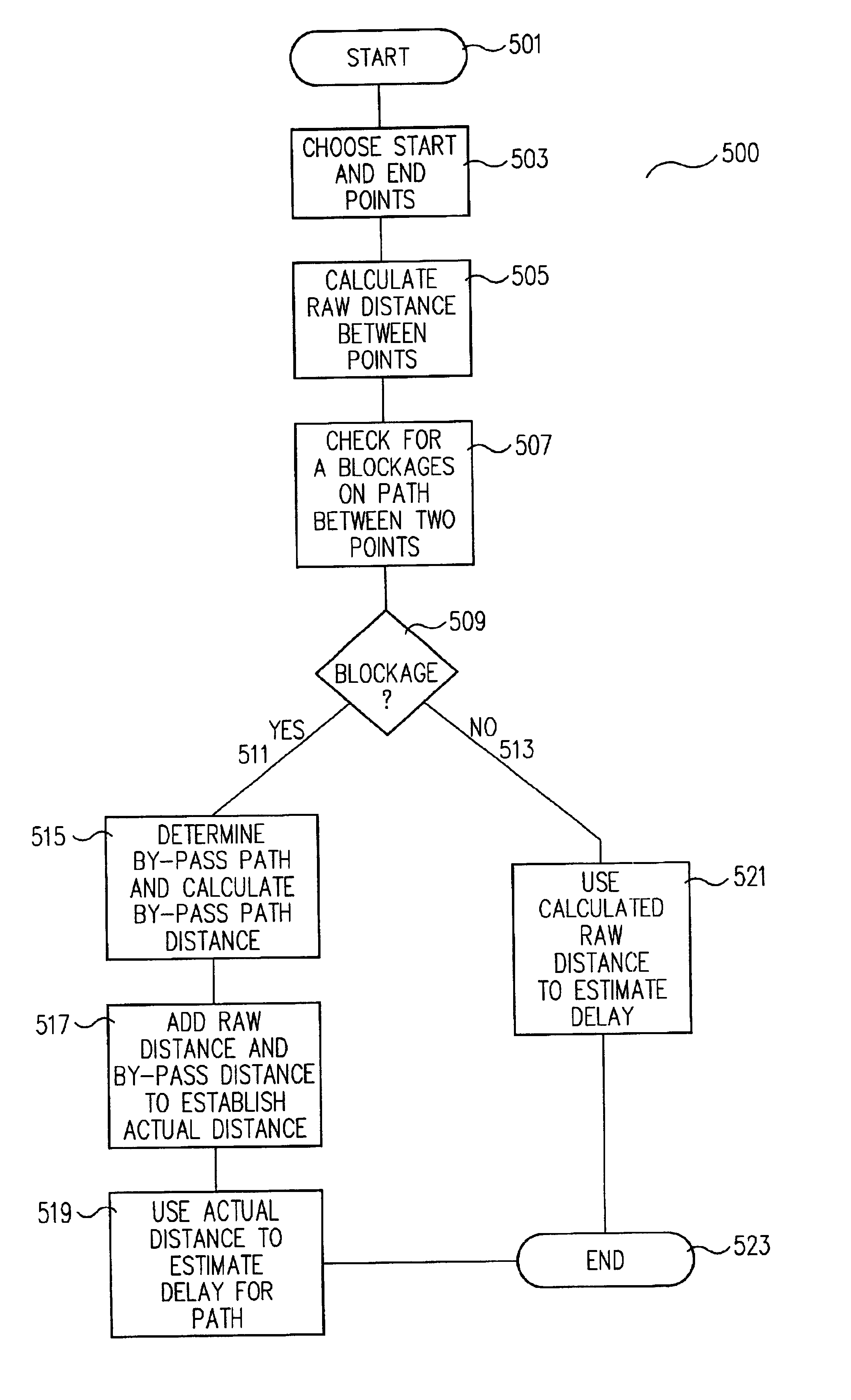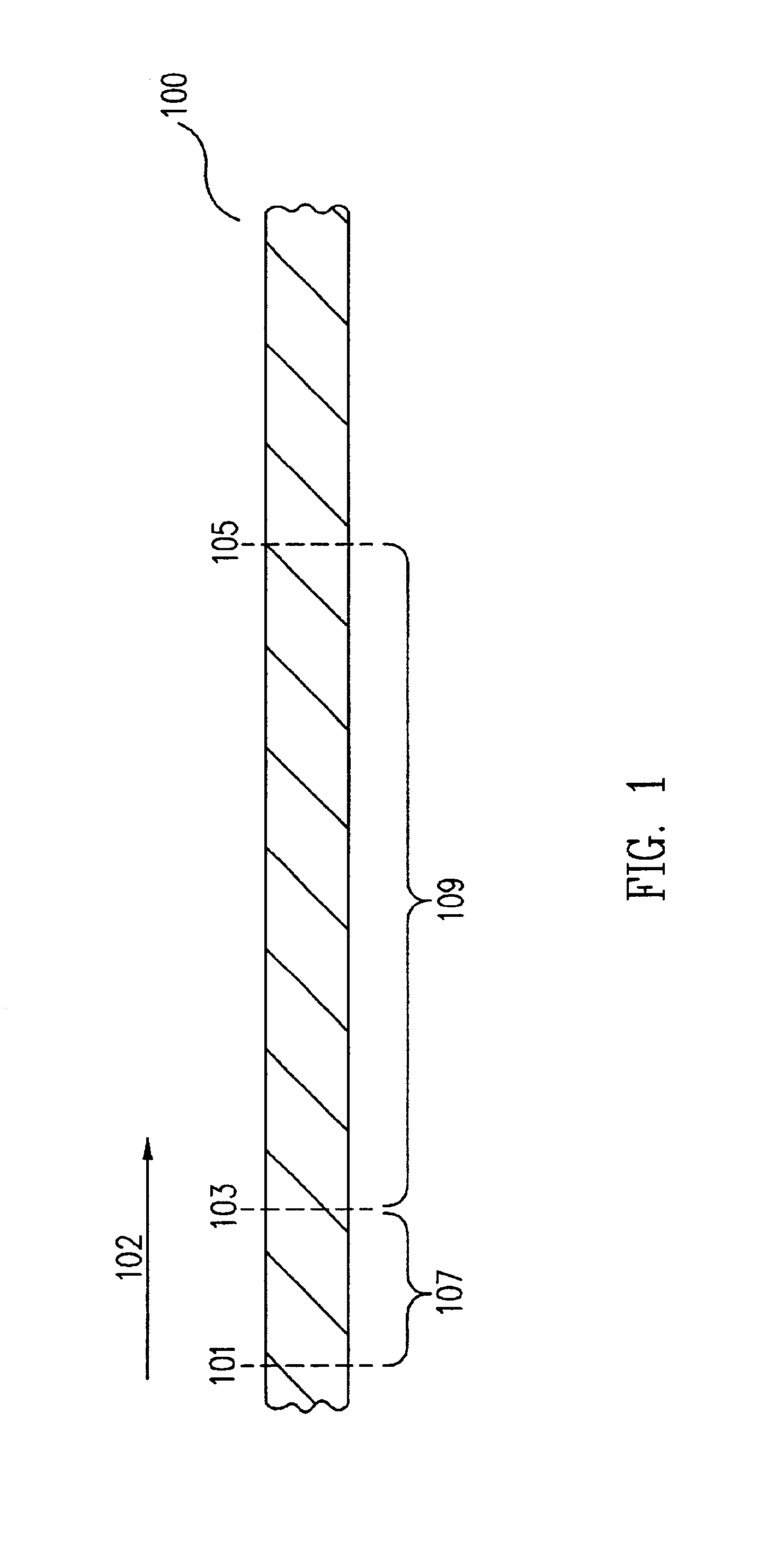Blockage aware zero skew clock routing method
- Summary
- Abstract
- Description
- Claims
- Application Information
AI Technical Summary
Benefits of technology
Problems solved by technology
Method used
Image
Examples
Embodiment Construction
[0026]The invention will now be described in reference to the accompanying drawings. The same reference numbers may be used throughout the drawings and the following description to refer to the same or like parts.
[0027]According to the invention, a blockage aware zero skew clock routing method (400 in FIG. 4 and 500 in FIG. 5) for calculating the distance, and therefore the delay on the same metal layer, between two points takes into account any blockages (220, 221, and 222 in FIGS. 2A and 3A) along the path between the two points and therefore creates a more usable and realistic measure of delay and allows for minimization, or elimination, of clock skew in the system being designed using the method of the invention.
[0028]In one embodiment of the invention, the blockage aware zero skew clock routing method (400 in FIG. 4) begins (401 in FIG. 4) and a first point and second point are designated (403 in FIG. 4). A path between the first and second points is then checked for blockages ...
PUM
 Login to View More
Login to View More Abstract
Description
Claims
Application Information
 Login to View More
Login to View More - R&D
- Intellectual Property
- Life Sciences
- Materials
- Tech Scout
- Unparalleled Data Quality
- Higher Quality Content
- 60% Fewer Hallucinations
Browse by: Latest US Patents, China's latest patents, Technical Efficacy Thesaurus, Application Domain, Technology Topic, Popular Technical Reports.
© 2025 PatSnap. All rights reserved.Legal|Privacy policy|Modern Slavery Act Transparency Statement|Sitemap|About US| Contact US: help@patsnap.com



